DUI suit features
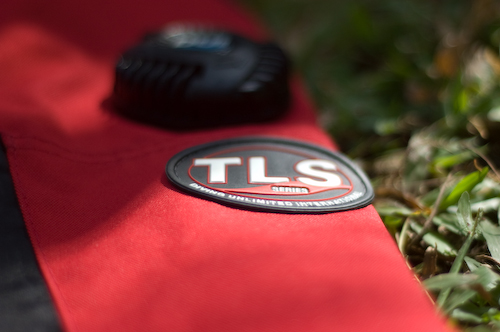 The information on this page is not specific to the DUI TLS350, but it is in our opinion the most versatile drysuit in the world today. It is well fitting, allows a full range of movement, and is extremely hard wearing. We’re going to talk through the features of this suit, and explain why it is such a good choice.
The information on this page is not specific to the DUI TLS350, but it is in our opinion the most versatile drysuit in the world today. It is well fitting, allows a full range of movement, and is extremely hard wearing. We’re going to talk through the features of this suit, and explain why it is such a good choice.
Front entry zipper and protector
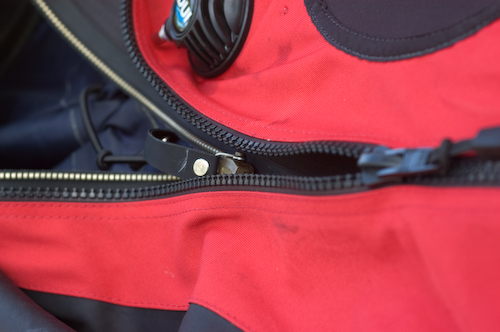 Dry sealing zippers are expensive items. Therefore the shorter you can make the zip for a dry suit, the cheaper it will be to manufacture. As a consequence, the back entry drysuit is a popular choice as it requires a shorter zipper. The downsides are unfortunately are many, and often unforseen. Firstly, the stiff zipper across the back reduces the mobility of the diver and can limit the divers ability to reach valves – a vital requirement for all divers. Secondly, the ability of a diver to dress themselves is compromised. We’ve all seen divers being zipped into and out of their own suits.
Dry sealing zippers are expensive items. Therefore the shorter you can make the zip for a dry suit, the cheaper it will be to manufacture. As a consequence, the back entry drysuit is a popular choice as it requires a shorter zipper. The downsides are unfortunately are many, and often unforseen. Firstly, the stiff zipper across the back reduces the mobility of the diver and can limit the divers ability to reach valves – a vital requirement for all divers. Secondly, the ability of a diver to dress themselves is compromised. We’ve all seen divers being zipped into and out of their own suits.
DUI suits come with the option of either a back entry or a front entry (self donning suit). Here at Wreck and Cave we strongly recommend the self donning version, the same as we use in our own diving. The DUI self donning suit comes with a zipper protection layer, incorporating a second, regular, zipper. This protects the dry zip from abrasions in and out of the water.
Braces
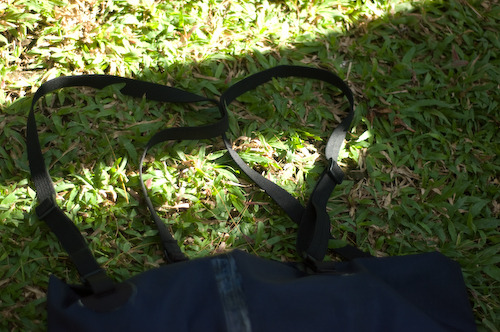 Everyone who has every dived a dry suit has got out of the water after a dive and, rather than completely remove the drysuit, has removed themselves to the waist. This often has the unfortunate result that the suit falls down when we walk around. Braces, attached at the belt level on the inside of the suit, allow us to walk around out of the water without tripping up on our sleeves!
Everyone who has every dived a dry suit has got out of the water after a dive and, rather than completely remove the drysuit, has removed themselves to the waist. This often has the unfortunate result that the suit falls down when we walk around. Braces, attached at the belt level on the inside of the suit, allow us to walk around out of the water without tripping up on our sleeves!
Telescoping torso
The telescoping torso feature of a DUI suit is related to a self donning suit. To put these suits on, the torso of the suit needs to be a little taller than the diver, so that we can put our arms into the suit first, and then place the neck seal over our heads. Once the neck seal is in place, we are left with an excess of suit material. A DUI suit folds this material at the waist level, and constrains it using a small crotch strap.
This actually has a hugely beneficial effect, in that it allows the diver great reach and mobility as the excess material is released as the diver stretches, and then retracts as the diver relaxes. Valve shut downs will never be easier.
DUI had patents on the internal braces and telescoping torso for many years, but these have now expired. You will see these features copied on other suits, but the manufacturers rarely understand all the reasons behind their use, so they often don’t work as well as the original DUI version. Beware of cheap imitations!
Seams
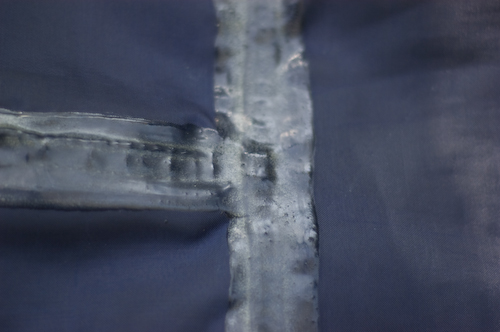 Anyone who’s owned a drysuit for any length of time will know that, unless you rip a hole in it, it will eventually start to leak at the seams. DUI drysuits are glue sealed, which is much more flexible than the usual tape used on most other suits. This results in a longer lasting suit. DUI are so confident in this seam technology that they offer an 8 year warranty on the integrity of the seam. If you’re considering another brand of suit, ask if they’ll match that.
Anyone who’s owned a drysuit for any length of time will know that, unless you rip a hole in it, it will eventually start to leak at the seams. DUI drysuits are glue sealed, which is much more flexible than the usual tape used on most other suits. This results in a longer lasting suit. DUI are so confident in this seam technology that they offer an 8 year warranty on the integrity of the seam. If you’re considering another brand of suit, ask if they’ll match that.
Dump valves
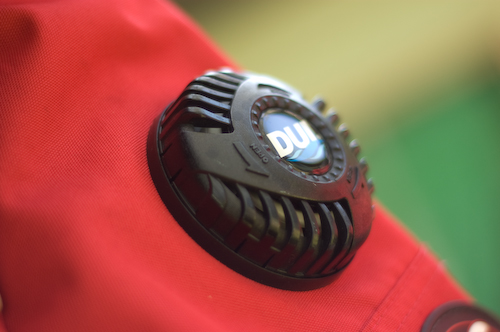 You put gas into the suit as you descend to eliminate the suit squeeze. So on ascent, it needs to come out right? DUI offer a range of dump valves – Apeks high profile, low profile and also the Scitech valves. All of this is irrelevant if the valve is in the wrong place. DUI suit dump valves are placed on the outside of the left arm. Not on the side, not under the arm, not in a fold of loose fabric. Dumping excess gas on ascent is then easy as the valve is always at the highest point in the suit, it floats away from the undersuit and allows a clear path for the gas to exit.
You put gas into the suit as you descend to eliminate the suit squeeze. So on ascent, it needs to come out right? DUI offer a range of dump valves – Apeks high profile, low profile and also the Scitech valves. All of this is irrelevant if the valve is in the wrong place. DUI suit dump valves are placed on the outside of the left arm. Not on the side, not under the arm, not in a fold of loose fabric. Dumping excess gas on ascent is then easy as the valve is always at the highest point in the suit, it floats away from the undersuit and allows a clear path for the gas to exit.
Days of bashing the dump valve to vent, wrapping your arm in duct tape to prevent it jamming the valve, standing vertically upright in the water and other such remedies are a thing of the past with a well placed dump valve on a well fitting suit.
Warm neck collar
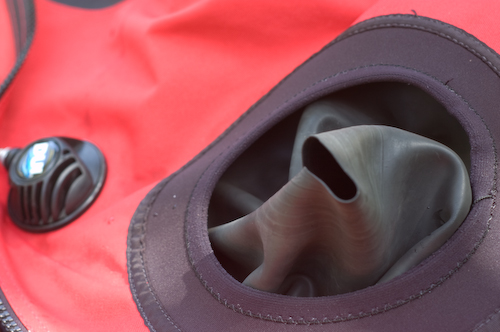 Our bodies pump around 20% of our blood up to the head, and most of this goes through the carotid arteries in the neck. Having a cold neck is a great way to get your whole body cold. It’s why we wear scarves in winter! Underwater, a scarf isn’t really a viable option, so DUI have come up with the warm neck collar. This allows the heck of your hood to be tucked into a neoprene flap on the suit that sits over the top of the neck seal. The amount of water flushing around the neck area is dramatically reduced, and the diver remains warmed for longer.
Our bodies pump around 20% of our blood up to the head, and most of this goes through the carotid arteries in the neck. Having a cold neck is a great way to get your whole body cold. It’s why we wear scarves in winter! Underwater, a scarf isn’t really a viable option, so DUI have come up with the warm neck collar. This allows the heck of your hood to be tucked into a neoprene flap on the suit that sits over the top of the neck seal. The amount of water flushing around the neck area is dramatically reduced, and the diver remains warmed for longer.
It sounds like a gimmick, but it really does work.
DUI suit options
In addition to the standard features described above, there are a range of extra features that you can choose to have added to your suit. Depending on your application, you can add them in, or leave them off.
Pockets
An instructor once asked me if I have any trousers that don’t have pockets. I did at the time have one pair, but I never wore them, because they didn’t have pockets! I now cannot imagine having a dry suit without pockets. There would be nowhere to keep SMB’s, spools, wetnotes and the host of other things I carry with me on a dive.
DUI offer a range of pockets, but the cargo pocket is the best. It’s a very simple device, big enough to hold all the stuff you need, and the top closes with a velcro flap, meaning that it will close on its own if you forget, unlike a zipper pocket.
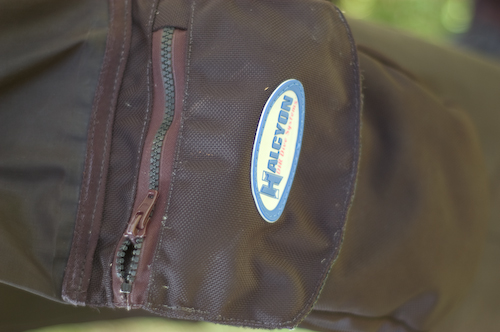 There is another option, and that is to add a Halcyon pocket. These are truly marvelous objects, if you can describe a pocket in such a way. There are so many nice touches. Starting with the velcro opening.
There is another option, and that is to add a Halcyon pocket. These are truly marvelous objects, if you can describe a pocket in such a way. There are so many nice touches. Starting with the velcro opening.
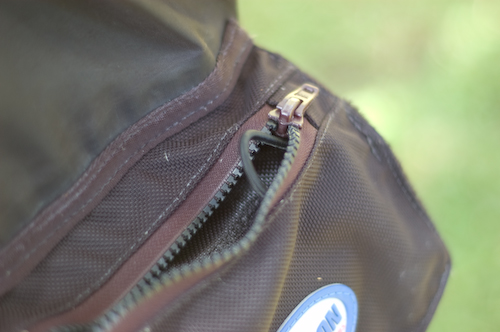 Built in to this is a small pocket, with ready-fitted attachment loops. Useful for cave line arrows, spare boltsnaps, basically anything small that you don’t want to end up at the bottom of a big pocket.
Built in to this is a small pocket, with ready-fitted attachment loops. Useful for cave line arrows, spare boltsnaps, basically anything small that you don’t want to end up at the bottom of a big pocket.
The main pocket compartment comes with bungee loops already installed. Also, a small, low profile inner pocket is included for sliding wetnotes in and out without emptying the rest of your pocket, or getting them jammed when replacing them.
These are seriously nice extras to have on your suit, and you will not regret the extra cost.
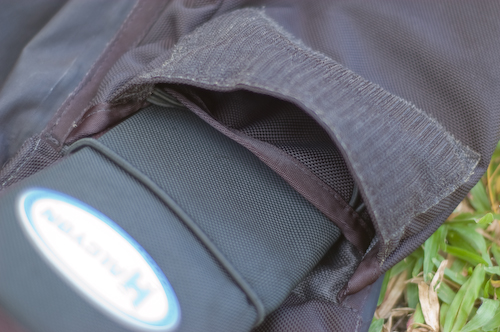
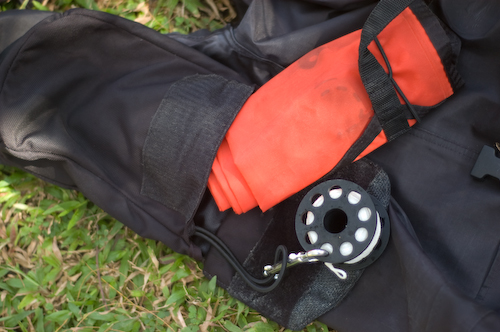
Boots
DUI offer two variants of boot. Both are low volume, reducing the possibility of “floaty feet”. The choice comes down to Rock Boots and the more traditional Turbo soles. Rock boots comprise a simple compressed neoprene sock that is attached to the drysuit. Once the suit is donned, the diver then puts on a tough outer boot, the Rock Boot. These are very tough and if you do a lot of diving involving clambering over rocky shores or rough terrain then this boot suit be considered.
The turbo sole is essentially a neoprene sock, with a stiff sole attached. It is meant to be close fitting and is designed for in-water use. Rough terrain does not suit it so well, as your foot will slide around inside the boot, which may damage the neoprene if you roll onto sharp rocks.
In water, the turbo sole is by far the best, having low volume and no laces to come undone. The rock bot by its nature is larger than the turbo sole, so some divers may find they need bigger fins to accommodate the boot.
P-valve
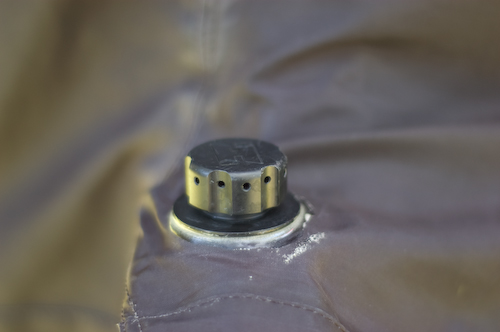 “P-valve”, “overboard discharge valve”, call it what you will. It enables you to urinate while in the water. This is invaluable on long dives, and has important safety value or more challenging decompression dives, as the diver can maintain full hydration, and even drink during the dives, without risking soaking the suit from the inside, so to speak. The Halcyon valve is a nice compact unit, fully balanced, and easy to use. No more crossed legs on the deco stop!
“P-valve”, “overboard discharge valve”, call it what you will. It enables you to urinate while in the water. This is invaluable on long dives, and has important safety value or more challenging decompression dives, as the diver can maintain full hydration, and even drink during the dives, without risking soaking the suit from the inside, so to speak. The Halcyon valve is a nice compact unit, fully balanced, and easy to use. No more crossed legs on the deco stop!
Zip seals & gloves
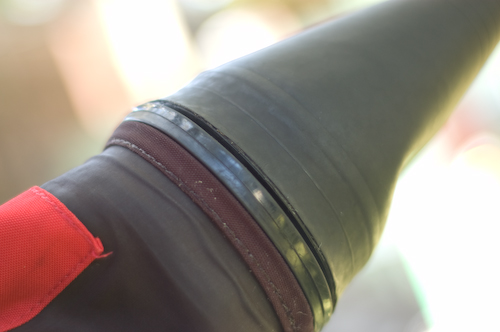 This is probably one of DUI’s finest innovations. The failure of a dry suit seal most often happens as the diver is putting on the suit. That generally means that the dive is cancelled until a repair can be effected. The Zip seal allows a diver to carry a spare set of seals, and simply swap one out if it fails. The technology is similar to that used on “ZipLock” bags, and the new seal can be in place within minutes. The technology extends to dry gloves as well, and it is possible to install gloves to the suit, again in a matter of minutes. The Zip seal can also be installed on the neck.
This is probably one of DUI’s finest innovations. The failure of a dry suit seal most often happens as the diver is putting on the suit. That generally means that the dive is cancelled until a repair can be effected. The Zip seal allows a diver to carry a spare set of seals, and simply swap one out if it fails. The technology is similar to that used on “ZipLock” bags, and the new seal can be in place within minutes. The technology extends to dry gloves as well, and it is possible to install gloves to the suit, again in a matter of minutes. The Zip seal can also be installed on the neck.
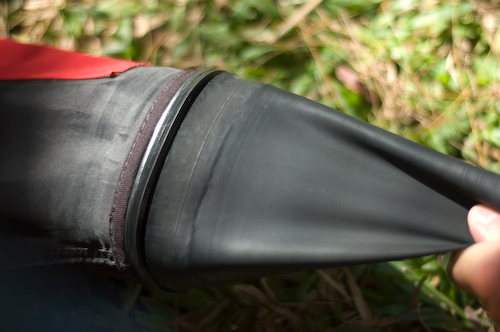 Many people are justifiably sceptical about these seals, and fear that they will leak, or worse, come apart underwater. It’s difficult to persuade that they won’t, but the true test is to try and pull a set apart. Almost impossible. They have to be removed by “peeling” the seal away from the mounting ring on the suit, and the presence of the divers wrist makes this impossible while the suit is being worn.
Many people are justifiably sceptical about these seals, and fear that they will leak, or worse, come apart underwater. It’s difficult to persuade that they won’t, but the true test is to try and pull a set apart. Almost impossible. They have to be removed by “peeling” the seal away from the mounting ring on the suit, and the presence of the divers wrist makes this impossible while the suit is being worn.
Knee pads and crotch pad
Reinforcement around the knees is nice for those of us that spend time kneeling on the bottom, loading up with stage cylinders and scoters, for example. Also, the crotch pad allows increased protection if you use a scooter a lot. These are nice options for a suit, and will add years to the life of a suit if you dive in aggressive environments.
